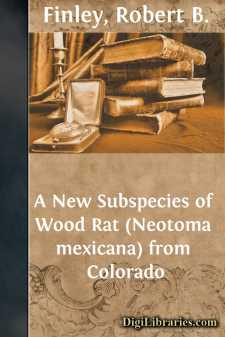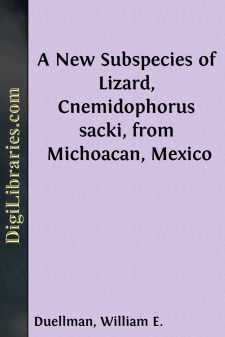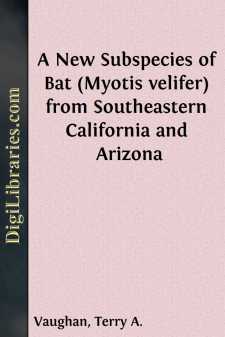Fiction
- Action & Adventure 180
- Biographical 15
- Christian 59
- Classics
- Coming of Age 5
- Contemporary Women 3
- Erotica 8
- Espionage/Intrigue 12
- Fairy Tales, Folklore & Mythology 236
- Family Life 169
- Fantasy 117
- Gay 1
- General 596
- Ghost 32
- Historical 808
- Horror 43
- Humorous 159
- Jewish 25
- Legal 4
- Medical 22
- Mystery & Detective 315
- Political 49
- Psychological 41
- Religious 64
- Romance 158
- Sagas 11
- Science Fiction 730
- Sea Stories 113
- Short Stories (single author) 537
- Sports 10
- Suspense 1
- Technological 8
- Thrillers 2
- Urban Life 31
- Visionary & Metaphysical 1
- War & Military 173
- Westerns 199
Classics Books
Sort by:
CHAPTER I "It's plum amazin' ter heer ye norate thet ye've done been tradin' and hagglin' with old man McGivins long enough ter buy his logs offen him and yit ye hain't never met up with Alexander. I kain't hardly fathom hit noways." The shambling mountaineer stretched himself to his lean length of six feet two, and wagged an incredulous head. Out of pale eyes...
more...
A Deceptive Dedication I I have shown the manuscript of this book to a well-known author. One of those staid, established authors whose venom has been extracted by the mellow years. My author is beyond rancour and exploit; he has earned the right to bask in his own celebrity, and needs to judge no more, because no longer does he fear judgment. He is like a motorist who has sowed his wild petrol. He...
more...
Omar Ben Sufi was a cat. This unadorned statement would have wounded Omar Ben to the marrow of his pride, for he chanced to be a splendid tiger-marked feline of purest Persian breed, with glorious yellow eyes and a Solomon-in-all-his-glory tail. His pedigree could be traced directly back to Padisha Zim Yuki Yowsi Zind—a dignity, in itself, sufficient to cause an aristocratic languor; but, to the...
more...
by:
John M. Legler
Gopherus flavomarginatus new species Holotype.—U.S. National Museum 61253, adult; stuffed specimen with disassociated skull; 30 to 40 miles from Lerdo, Durango, Mexico; obtained by Dr. Elswood Chaffee, 1918. Paratypes.—USNM 61254, adult, stuffed specimen with skull in place, other data the same as those for holotype; USNM 60976, adult, stuffed specimen with disassociated skull, Lerdo, Durango, Dr....
more...
by:
John M. Legler
In September, 1958, the author and two colleagues collected a large series of Pseudemys in small ponds and in a river in the basin of Cuatro Ciénegas, Coahuila. The specimens prove to represent a previously unrecognized subspecies of Pseudemys scripta. The subspecies is named in honor of Edward Harrison Taylor who has contributed more than any other person to our present knowledge of the herpetofauna...
more...
by:
Robert B. Finley
Field and museum studies of the wood rats of Colorado have revealed the existence of an unnamed subspecies of Neotoma mexicana in eastern Colorado south of the Arkansas River. The characters of the new subspecies are most distinctive in the northeastern part of its range near Two Buttes and Higbee. It differs in cranial characters from N. m. fallax and N. m. inopinata and averages slightly larger, but...
more...
by:
J. Knox Jones
The fruit-eating bats of the genus Sturnira are represented on the North American mainland by two species, S. lilium and S. ludovici. The former, in most areas the smaller of the two, is widely distributed in México and Central America and is common in many places. On the other hand, S. ludovici, described by Anthony (1924:8) from near Gualea, Ecuador, generally has been regarded as rare; insofar as...
more...
When preparing distribution maps for a revised list of the Mammals of Kansas it became apparent to me that pocket mice of the species Perognathus flavescens from south-central Kansas and adjoining parts of Oklahoma were without a subspecific name. The new subspecies is named and described below. Perognathus flavescens cockrumi new subspecies Holotype.—Female, subadult (P4 moderately worn), skin with...
more...
Top of head and nape dusty brown; tip of rostral and lateral edges of superciliaries dark cream-color; upper labials and sides of head anterior to eyes cream-color, mottled with blue; lower labials and postocular region pale blue; mental, postmental, and sublabials cream-color. Upper surfaces of forelimbs dull bluish gray, spotted with pale greenish yellow; dorsal surfaces of proximal one-fourth of...
more...
by:
Terry A. Vaughan
The first specimens of Myotis velifer from California were taken in 1909 by C. L. Camp at Needles, San Bernardino County (Grinnell, Univ. California Publ. Zool., 12:266, March 20, 1914), and subsequently this bat was recorded from farther south in the lower Colorado River Valley at the Riverside Mountains, Riverside County (Stager, Jour. Mamm., 20:226, May 14, 1939). West of the Rocky Mountains the...
more...











